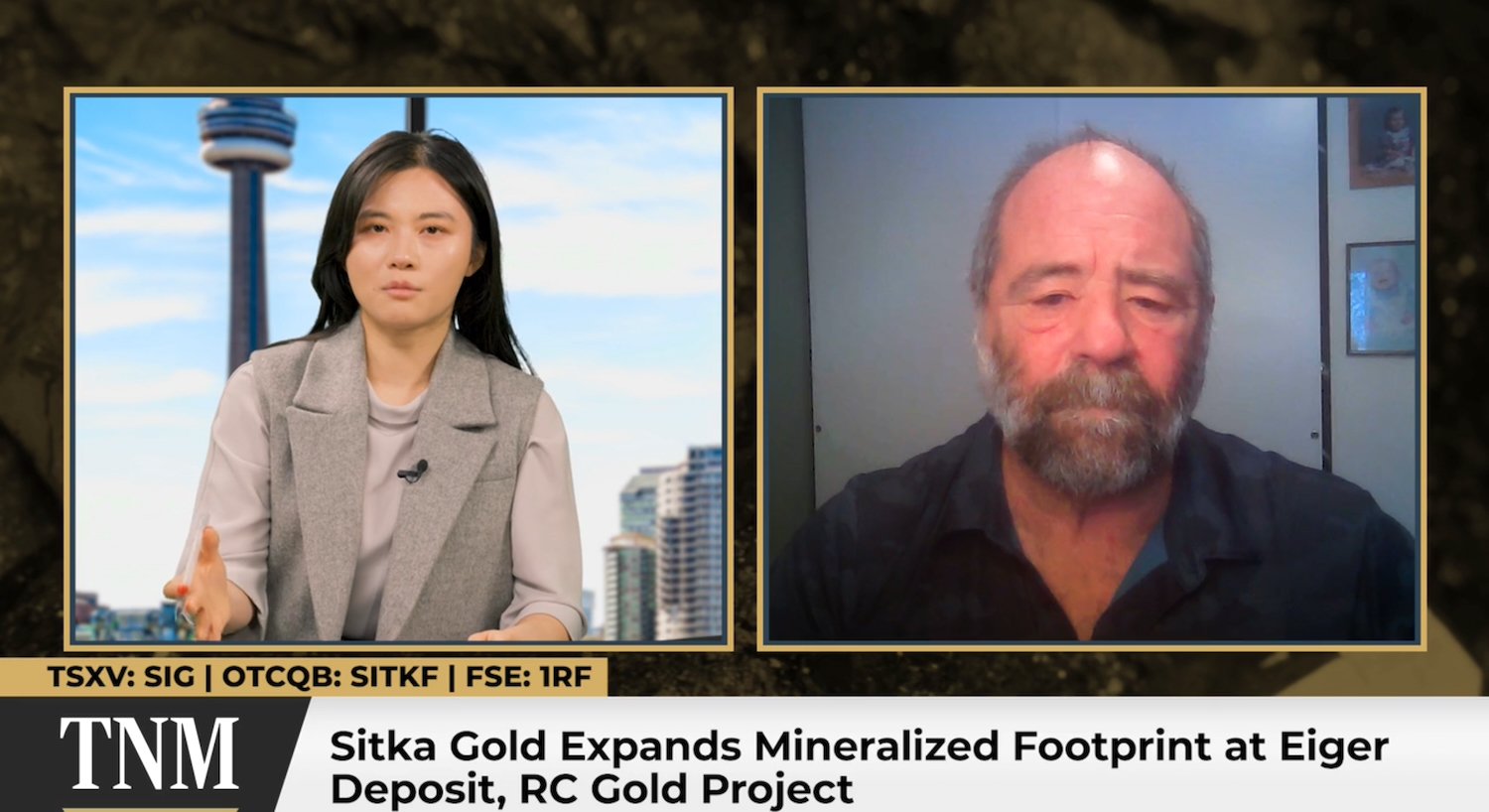In May, the company reported 15.4 metres at 0.44 gram gold per tonne, 22.04 grams silver, 5.06% copper, 13.12 grams palladium, 3.35 grams platinum and 0.015% nickel in hole PN-24-055. It was the first of 16 holes at Nisk’s Lion zone which have hit mineralization 15 times, pushing the project beyond just nickel, CEO Terry Lynch said.
“We knocked it out of the park,” Lynch told an August conference call. “This has become a polymetallic project. They’re super rare and they’re super valuable.”
Shares in Power Nickel rose from 20¢ apiece April 1 to 88¢ on June 21 before easing to 58¢ near press time, valuing the company at $109.8 million. Lynch, who says his company has been targeted by short-sellers, said the company plans to thwart the activity by spinning out five early stage properties in British Columbia and Chile to a private company within the next month or so.
Processing plant
The Lion discovery sidelined plans to take on a major investor for about 10% of the project, Lynch said. Industry talks continue and there’s bound to be partner at some point, but the company is fully funded for now, he said. Power is considering a nickel powder processing plant in Texas with Toronto-based CVMR, Lynch said. Power is planning to issue a feasibility study on it in September.
“The refinery business is highly attractive to us,” he said. “The polymetallic mine development would be a different animal and most likely that would be something we’d be looking to sell.”
Power Nickel began with the 46-sq.-km Nisk project in Quebec’s James Bay region in 2021 with an earn-in agreement with Critical Elements Lithium (CRE: TSXV). Power now holds 80% after filing a resource on the main Nisk nickel-copper deposit last November. Lion is about 5 km northeast of the Nisk deposit.
The site is 8 km east of Nemaska, which has an airport and is about 2.5 hours by plane north of Montreal. The site is accessed by gravel roads to a Hydro Quebec electrical station, then by a 4-km trail. It lies 283 km northwest of Chibougamau and 425 km northeast of Matagami.
Power says the project could be developed as Canada’s first carbon neutral polymetallic mine by using carbon capture and hydroelectric power. Provincial and federal tax breaks cover half of exploration costs.
Polymetallic peers
The company has brought on Steve Beresford, a polymetallic expert and former chief geologist for First Quantum Minerals (TSX: FM) and China-controlled MMG Mining, as a technical advisor and board member. Beresford says Nisk has attributes similar to giant polymetallic deposits such as Anglo American’s (LSE: AAL) Sakatti in Finland and Russian-held Norilsk Nickel’s Norilsk mine in Siberia that’s estimated to hold US$1 trillion of metal.
“By combining nickel, platinum group elements (PGEs) and copper plus gold and silver, we can end up with these really large copper-equivalent grades,” he told the conference call. “So unlike, say, other copper deposit styles like porphyries or sediment-hosted copper, which are relatively low grade, these systems are very high grade, very small footprint.”
Exploration so far appears to have found copper sulphides on top of nickel sulphides in an intrusion system and further work must use geochemical signatures to determine the best area encompassing all the metals, he said.
“It’s like a Goldilocks zone,” the geologist said. “There’s sort of an ultimate threshold of getting the optimum value of all the metals forming these systems. So rather than trading nickel for copper or for PGEs, we can get these systems that have everything.”
This year’s exploration program includes drilling at both Nisk and Lion as well as ground and down-hole electromagnetic surveys, Adam Findley, vice-president for exploration at contract explorers GeoVector Management, said on the call. Drilling aims to increase the strike length and depth while stepping out from the successes of the previous program, he said.
Results due
Drilling at Lion is to probe whether mineralization extends beyond a current area of 300 metres deep, 250 metres along strike and thickness ranges from 5 to10 metres, Lynch said. The first results from the summer program may arrive in September.
Four more drill holes reported in June at the Lion target added perspective at depth, the company said. Hole PN-24-059 cut a highlight intercept of 17.3 metres grading 0.66 gram gold, 27.2 grams silver, 3.33% copper, 2.04 grams palladium, 1.49 grams platinum and 0.18% nickel from 185.1 metres depth.
“We had several holes of 10 metres 10% copper-equivalent, and some greater than 20%,” Lynch said. “These are truly epic numbers, never really seen before, especially in the copper PGE coverage, it just doesn’t come like that.”
Inco, now a part of Vale (NYSE: VALE), discovered nickel on the site in 1962. It drilled 28 holes there that decade. Muscoho Explorations, later Golden Goose Resources, drilled more on the project from 1987. It produced a historical resource in 2008 of 2 million measured and indicated tonnes and 783,000 inferred tonnes.
Site history
Nemaska Exploration conducted geophysical and geochemical work before Resources Monarques acquired the property in 2011 and drilled more. Critical Elements Lithium bought the site in 2014, but little work was done.
Power Nickel traced the mineralized main Nisk zone over a strike length of more than 900 metres, about 500 metres vertical depth and 0.5 to 32 metres wide. The deposit remains open at depth and along strike to the east and west.
The Nisk main deposit holds 4.9 million indicated tonnes underground grading 0.78% nickel, 0.05% cobalt, 0.42% copper, 0.78 gram palladium per tonne for 38,300 tonnes nickel, 2,400 tonnes cobalt, 20,500 tonnes copper and 123,100 tonnes palladium, according to Power Nickel’s filing in November.
Open-pit resources total 519,000 indicated tonnes at 0.63% nickel, 0.04% cobalt, 0.3% copper and 0.56 gram palladium for 3,300 tonnes nickel, 200 tonnes cobalt, 1,600 tonnes copper and 9,400 tonnes palladium.
In the inferred category, Nisk has 1.8 million tonnes in underground resources grading 0.98% nickel, 0.06% cobalt, 0.45% copper and 1.11 grams palladium for 17,500 tonnes nickel, 1,100 tonnes cobalt, 8,100 tonnes copper and 64,000 tonnes palladium.
Sedimentary basin
Nisk is in the Nemiscau subprovince of the Quebec part of the Archean Superior Geological Province that forms the core of North America. The Nemiscau Subprovince is a large sedimentary basin formed almost 2.7 billion years ago.
The Nisk deposit appears to be a classic magmatic nickel sulphide deposit associated with an ultramafic intrusion, the company says. The sulphide mineralization consists primarily of pyrrhotite, chalcopyrite, pentlandite and pyrite.
The addition of Lion brings a high-grade polymetallic system with nickel of better quality than the metal produced abundantly in Indonesia, the company says. The Nisk project offers rare high grades across several minerals, Beresford and Lynch said.
“The big revelation from a business perspective is the transformation from nickel sulphide to polymetallic is really incredible in terms of the value proposition for investors,” Lynch said. “We’re pretty excited with what we’ve found and it certainly is worthy of a lot more exploration and a lot more discovery.”
The preceding Joint Venture Article is PROMOTED CONTENT sponsored by Power Nickel and produced in co-operation with The Northern Miner. Visit: www.powernickel.com for more information.




